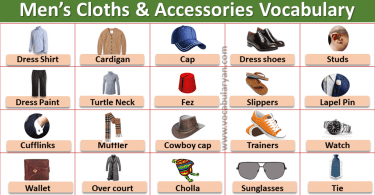Learning the Parts of a Computer is essential for understanding how computers work and building basic technology vocabulary. Key components include the monitor (displays information), keyboard (used for typing), and CPU or Central Processing Unit (the brain of the computer). Additionally, parts like the mouse, motherboard, RAM, and hard drive each play a specific role in processing and storing data. Whether you’re a student, beginner, or tech learner, this guide introduces common and important computer parts to support clear and practical learning.
Why do we need to learn Parts of computer names?
knowing the names and functions of computer accessories empowers users to make informed decisions, troubleshoot issues, enhance their computing experience, and adapt their setups to meet specific requirements. It also contributes to a broader understanding of the ever-evolving world of technology.
List of Parts of a Computer
A computer is made up of several main parts that work together to perform tasks. Key components include the monitor, keyboard, mouse, CPU, motherboard, RAM, hard drive, and power supply. Each part has a specific function that helps the computer operate smoothly.
Central Processing Unit (CPU):
The CPU is the computer’s brain, responsible for executing instructions and performing calculations.
Motherboard:
The main circuit board that connects and facilitates communication between various hardware components.
Random Access Memory (RAM):
RAM provides temporary storage for data and instructions needed for active tasks.
Hard Disk Drive (HDD):
This storage device stores long-term data, including the operating system and user files, using spinning disks.
Solid-State Drive (SSD):
Similar to an HDD, but uses flash memory for faster data access and improved durability.
Power Supply Unit (PSU):
Converts external power into the appropriate voltage levels needed for the computer’s operation.
Graphics Processing Unit (GPU):
Responsible for rendering images and graphics, vital for gaming and multimedia tasks.
Optical Drive:
Reads and writes data from optical discs like DVDs and Blu-ray discs.
Central Processing Unit (CPU) Cooler:
Keeps the CPU temperature within safe limits by dissipating heat.
Power Button and Front Panel:
Buttons and LEDs for powering on/off the computer and indicating system status.
Expansion Slots:
Allow for the addition of hardware components like graphics cards and sound cards.
Network Interface Card (NIC):
Provides network connectivity for internet and local network access.
USB Ports:
Universal Serial Bus (USB) ports connect various external devices like keyboards, mice, and external drives.
Audio Ports: Jacks for headphones, microphones, and speakers to enable audio input and output.
Heat Sink: Dissipates heat from components like the CPU or GPU to prevent overheating.
Case Fan: Maintains proper airflow within the computer case to prevent overheating.
CMOS Battery: Powers the CMOS memory, which stores BIOS settings and the system clock.
BIOS Chip: Contains firmware that initializes hardware during startup and controls system settings.
Power Cable and Data Cables:
Connect components to the power supply and motherboard for power distribution and data transfer.
System Case (Chassis):
Houses all computer components, providing physical protection and organization.
Network Cable (Ethernet Cable):
Connects the computer to a network or the internet via a wired connection.
Webcam: Captures video for video conferencing, streaming, and recording.
Microphone: Records audio input for voice communication and recording purposes.
Speakers: Output sound for audio playback and multimedia experiences.
Graphics Card Bracket: Supports the graphics card and prevents sagging in larger GPUs.
Wireless Network Card: Provides Wi-Fi connectivity for wireless internet access.
Memory Card Reader:
Reads data from various types of memory cards used in cameras and other devices.
Bluetooth Module: Enables wireless connectivity with Bluetooth devices like headphones and keyboards.
SATA Cable: Connects storage devices, such as SSDs and HDDs, to the motherboard.
Case Panel (Front I/O Panel):
Contains ports for USB, audio, and other peripherals on the front of the computer case for easy access.




Leave a Comment